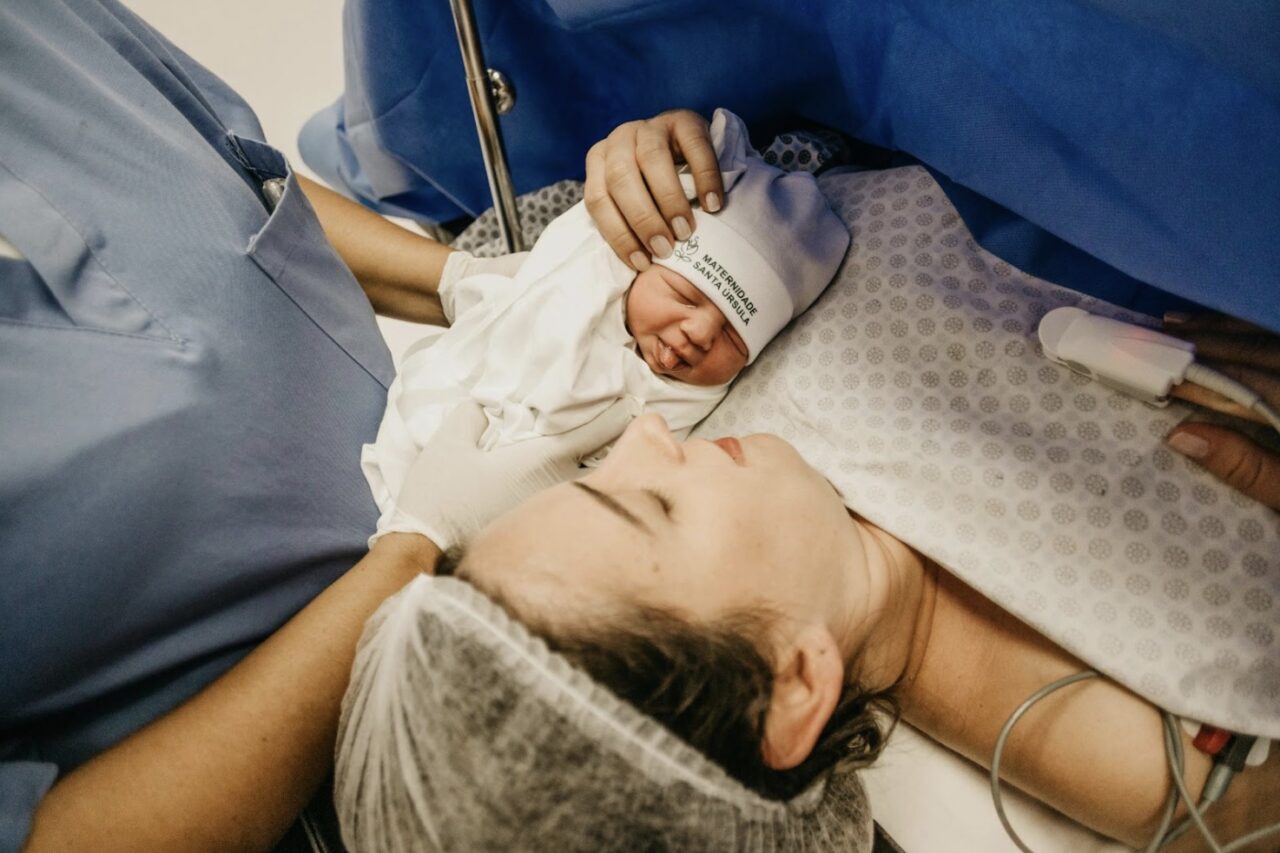Congratulations on the birth of your little one! While welcoming your baby into the world is an exciting and joyful time, your body is also navigating some significant changes after a cesarean section (C-section). One area that may require extra attention is your cesarean scar. Here is some insight into how this healing process works and how you can care for your scar to ensure the best recovery possible.
Why Is Scar Healing Important?
The scar itself is made up of tissue that needs time to heal, and its recovery can impact how you move, feel, and function in the long term. Addressing scar healing early on can help prevent complications like excessive scar tissue, pain, or tightness, and it can also reduce the likelihood of developing long-term pelvic floor dysfunction or back pain.
As physical therapists, our goal is to help not only manage the scar itself but also make sure your body functions well as a whole. Healing the scar properly can lead to better mobility, less discomfort, and an easier return to your activities.
The Healing Process: What to Expect
Scar healing is a gradual process that occurs in three key stages:
- Inflammatory Phase (0-5 days)
Right after surgery, your body is working hard to control bleeding and prevent infection. You may notice swelling and tenderness in the area. This is normal, but if you notice any unusual symptoms such as redness, heat, or drainage, it’s important to reach out to your healthcare provider. - Proliferation Phase (5 days – 6 weeks)
During this phase, your body begins to form new tissue to repair the wound. The scar will still be soft, and you may notice some itching as new collagen fibers are created. The scar tissue is still fragile, so it’s important to avoid putting too much strain on it. - Remodeling Phase (6 weeks – 18 months)
This is the longest phase, where your scar continues to mature. The tissue becomes stronger, but it’s also during this phase that some people may experience the development of adhesions or areas where the tissue sticks to underlying muscles or organs. Scar tissue may feel tight or uncomfortable at times, but with the right care, it should become more flexible and blend with surrounding tissue.
Tips for Scar Healing and Treatment
As your scar heals, it’s important to actively take steps to support the process. Here are a few key strategies that can help:
- Gentle Scar Massage
After your incision has fully healed (usually around 6 weeks), massaging the scar tissue can help break up adhesions, reduce tightness, and improve circulation to the area. Use a gentle, circular motion with your fingers or a lotion/cream that is safe for post-surgery use. Start with light pressure and gradually increase as your scar tissue becomes more comfortable. Massage can also help reduce the appearance of the scar over time. - Scar Tissue Mobility Exercises
Physical therapy can help you learn specific exercises to improve the mobility of your scar. Further, it’s beneficial to work on gentle abdominal breathing, pelvic tilts, and core activation exercises that can help the area around the scar stay flexible and reduce discomfort. These exercises will also help you rebuild strength in the core muscles that may have been affected by the C-section. - Breathing and Posture Awareness
Often, after a C-section, people unconsciously alter their posture to protect the scar or reduce discomfort. This can lead to tension in the upper back, shoulders, or pelvic region. We encourage a practice of deep, diaphragmatic breathing to engage the entire core and improve posture. Regular practice of proper alignment and posture throughout your daily activities can help prevent long-term issues. - Managing Scar Discomfort
As the scar heals, you may experience itching, burning, or tingling sensations. These are usually normal signs of healing, but if the discomfort becomes intense or persistent, it’s a good idea to talk to your doctor or a physical therapist. You can also apply heat or cold therapy (as recommended by your healthcare provider) to manage pain or tightness. - Consider Taping or Silicone Gel Sheets
Some physical therapists may recommend the use of silicone gel sheets or tape to help improve the appearance of your scar and reduce pain. These treatments help hydrate the scar, encourage collagen remodeling, and provide gentle compression, which can minimize excessive scarring over time.
When to Seek Professional Help
While many people heal well on their own, some individuals may experience complications related to their cesarean scar, such as excessive scarring, tightness, or pain. If you experience any of the following, it’s time to reach out to a healthcare professional:
- Persistent pain or discomfort around the scar
- Difficulty moving or bending due to tightness
- Bulging above the scar area (sometimes referred to as the “shelf”)
- Problems with bladder or bowel control (which can sometimes be linked to pelvic floor dysfunction after a C-section)
- Numbness or tingling that doesn’t improve
If you notice any of these signs, a specialized physical therapist who specializes in post-cesarean rehabilitation can help you address these issues through targeted manual therapy treatments and exercises.
Final Thoughts
Recovery after a C-section takes time, but with the right care and attention, you can ensure that your scar heals in a way that minimizes discomfort and supports your overall health. Working with a physical therapist can help you regain mobility, prevent complications, and return to your pre-pregnancy activities feeling strong and confident.
Remember, every body is different, so your healing journey will be unique to you. Be patient with yourself, and don’t hesitate to reach out to your healthcare team if you have any concerns about your scar or recovery.
Click here to schedule with our Boulder County pelvic health specialists for cesarean scar evaluation and treatment.

